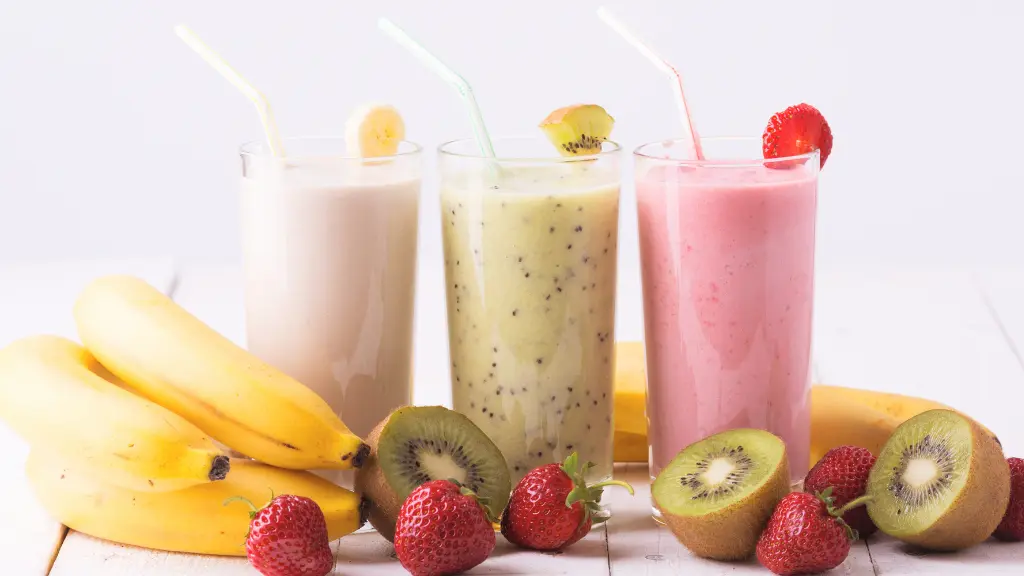Smoothies are a go-to choice for health enthusiasts. They’re quick, convenient, and loaded with fruits and vegetables. But have you ever wondered if blending fruit affects its nutrients?
Let’s dive into the science behind blending and its impact on the nutritional value of your favorite fruits.
You May Also Like: A First-Time Guide to Breckenridge: Colorado’s Alpine Treasure
1. What Happens to Fruit When You Blend It?
Blending breaks down fruit into a smooth, drinkable consistency. This process doesn’t inherently destroy nutrients, but it does change the way they’re distributed. Here’s what happens:
- Fiber Breakdown: Blending ruptures the plant cells containing fiber, altering its structure.
- Oxidation: The exposure of fruit to air during blending can lead to some nutrient loss, especially antioxidants like vitamin C.
- Easy Digestion: The breakdown makes nutrients more bioavailable, meaning your body can absorb them more efficiently.
2. Does Blending Destroy Nutrients?
Blending doesn’t destroy most nutrients. However, there are some minor changes:
- Heat: High-speed blenders can generate heat, but it’s usually not enough to destroy vitamins.
- Light and Air Exposure: Prolonged blending can oxidize sensitive vitamins, such as vitamin C and folate.
- Minimal Loss: Studies show that nutrient loss from blending is minimal compared to other cooking methods like boiling or frying.
Key Tip: Drink your smoothie soon after blending to preserve its nutrients.
3. What About Fiber in Smoothies?
One common misconception is that blending destroys fiber. This isn’t true, but the texture of the fiber changes.
- In Whole Fruit: Fiber remains intact, slowing digestion and keeping you full longer.
- In Blended Fruit: The fiber is broken into smaller pieces, making it less effective at slowing sugar absorption.
Blended smoothies still contain fiber, but they may not provide the same satiety as whole fruits.
4. Are Smoothies High in Sugar?
Blending doesn’t add sugar to fruit, but it does change how your body processes it:
- Whole Fruit: The intact fiber slows sugar absorption, leading to a gradual energy release.
- Blended Fruit: The natural sugars are more easily absorbed, potentially causing a quicker spike in blood sugar.
To balance your smoothie:
- Add protein sources like yogurt or nut butter.
- Include healthy fats like avocado or chia seeds.
- Limit added sweeteners like honey or syrups.
5. Do Smoothies Lose Antioxidants?
Fruits like berries and citrus are rich in antioxidants. Blending can expose these compounds to oxygen, leading to slight losses.
- Vitamin C: Oxidation reduces vitamin C content over time.
- Polyphenols: These compounds are generally stable and remain effective in blended fruit.
To minimize nutrient loss:
- Use fresh fruit.
- Store smoothies in an airtight container if not consumed immediately.
6. The Benefits of Blending Fruit
Blending isn’t all about potential downsides. It has many benefits:
Convenience
- Smoothies are an easy way to consume a variety of fruits and vegetables.
Enhanced Nutrient Absorption
- Blending breaks down tough plant walls, making nutrients more accessible.
Customizable Nutrition
- Add ingredients like spinach, flaxseeds, or protein powder to boost your smoothie’s nutritional value.
7. Tips for Nutrient-Rich Smoothies
To make your smoothies as healthy as possible, follow these tips:
Choose Whole Fruits Over Juice
- Use whole fruits instead of fruit juices to maximize fiber.
Add Vegetables
- Balance sweetness with nutrient-rich greens like spinach or kale.
Include Protein and Healthy Fats
- Add Greek yogurt, nuts, or seeds for a complete meal.
Minimize Blending Time
- Blend just long enough to achieve the desired consistency.
Drink Fresh
- Consume your smoothie immediately to retain its nutritional value.
8. Comparing Blended vs. Whole Fruit
| Aspect | Whole Fruit | Blended Fruit |
|---|---|---|
| Fiber Content | Intact and effective at slowing digestion. | Present but structurally altered. |
| Satiety | Keeps you fuller longer. | May not provide the same level of fullness. |
| Sugar Absorption | Slower, more gradual. | Faster, can cause quicker spikes. |
| Convenience | Requires more time to consume. | Quick and portable option. |
9. Common Myths About Blending Fruit
Let’s debunk some myths:
- Myth: Blending destroys all nutrients.
- Fact: Blending retains most nutrients with minimal losses.
- Myth: Smoothies are unhealthy because of sugar.
- Fact: Smoothies can be balanced with the right ingredients.
- Myth: Blending removes fiber.
- Fact: Fiber remains in smoothies, though its texture changes.
10. Conclusion
Blending fruit for smoothies doesn’t significantly reduce its nutritional value. While some changes occur, smoothies remain a convenient and healthy way to enjoy fruits. To maximize benefits, focus on whole, fresh ingredients and drink your smoothie soon after making it.
Whether you’re a smoothie enthusiast or a first-timer, blending fruit can be a delicious way to fuel your body with essential nutrients. Happy blending!











